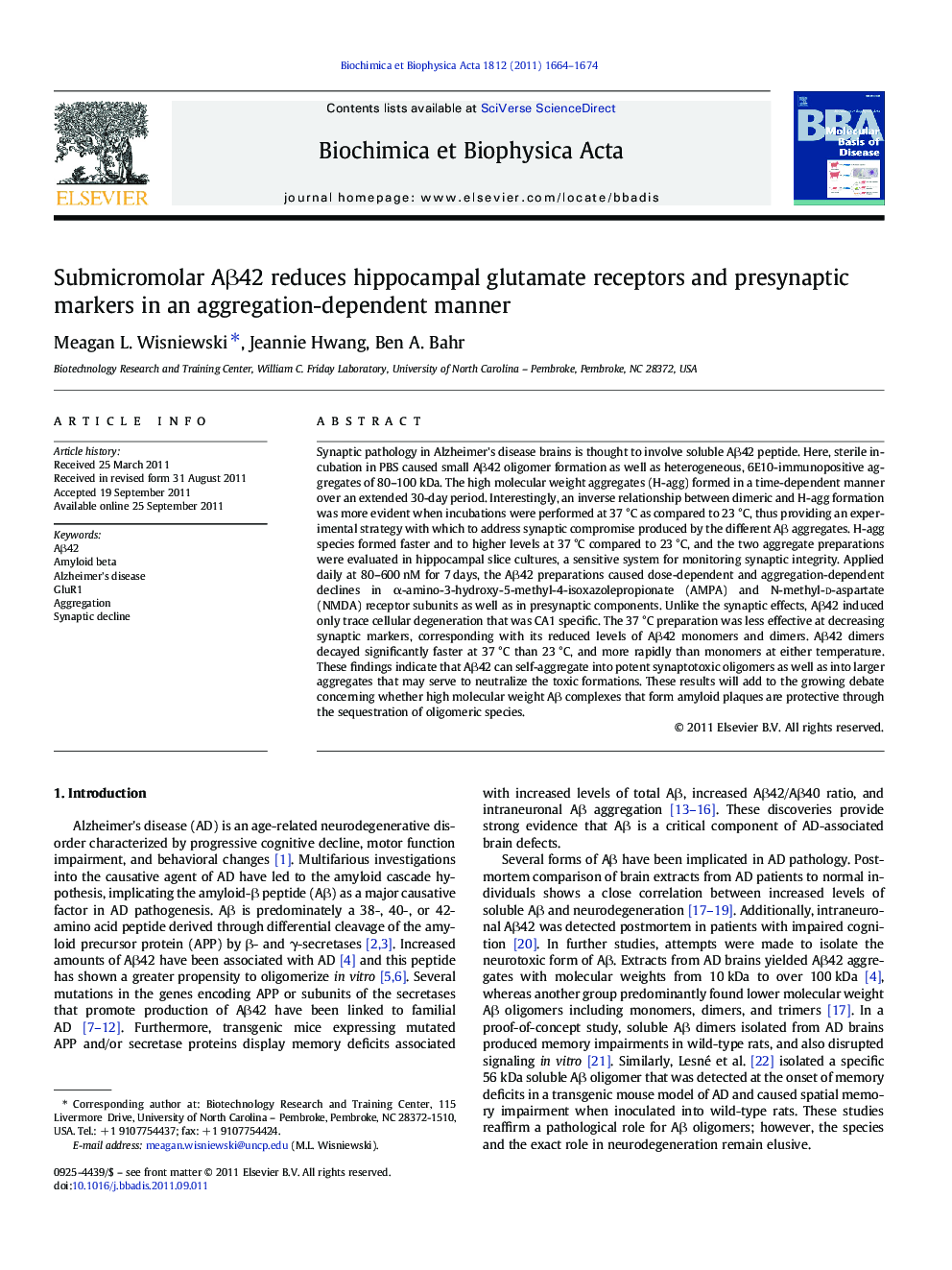| کد مقاله | کد نشریه | سال انتشار | مقاله انگلیسی | نسخه تمام متن |
|---|---|---|---|---|
| 1904938 | 1534689 | 2011 | 11 صفحه PDF | دانلود رایگان |

Synaptic pathology in Alzheimer's disease brains is thought to involve soluble Aβ42 peptide. Here, sterile incubation in PBS caused small Aβ42 oligomer formation as well as heterogeneous, 6E10-immunopositive aggregates of 80–100 kDa. The high molecular weight aggregates (H-agg) formed in a time-dependent manner over an extended 30-day period. Interestingly, an inverse relationship between dimeric and H-agg formation was more evident when incubations were performed at 37 °C as compared to 23 °C, thus providing an experimental strategy with which to address synaptic compromise produced by the different Aβ aggregates. H-agg species formed faster and to higher levels at 37 °C compared to 23 °C, and the two aggregate preparations were evaluated in hippocampal slice cultures, a sensitive system for monitoring synaptic integrity. Applied daily at 80–600 nM for 7 days, the Aβ42 preparations caused dose-dependent and aggregation-dependent declines in α-amino-3-hydroxy-5-methyl-4-isoxazolepropionate (AMPA) and N-methyl-d-aspartate (NMDA) receptor subunits as well as in presynaptic components. Unlike the synaptic effects, Aβ42 induced only trace cellular degeneration that was CA1 specific. The 37 °C preparation was less effective at decreasing synaptic markers, corresponding with its reduced levels of Aβ42 monomers and dimers. Aβ42 dimers decayed significantly faster at 37 °C than 23 °C, and more rapidly than monomers at either temperature. These findings indicate that Aβ42 can self-aggregate into potent synaptotoxic oligomers as well as into larger aggregates that may serve to neutralize the toxic formations. These results will add to the growing debate concerning whether high molecular weight Aβ complexes that form amyloid plaques are protective through the sequestration of oligomeric species.
► Formation of high molecular weight Aβ42 aggregates is time-dependent.
► High molecular weight aggregates appear to influence Aβ42 dimer decay rate.
► Long term Aβ42 aggregation events lead to reduced synaptotoxicity.
► Sequestering Aβ42 dimers into large aggregates may be protective.
Journal: Biochimica et Biophysica Acta (BBA) - Molecular Basis of Disease - Volume 1812, Issue 12, December 2011, Pages 1664–1674